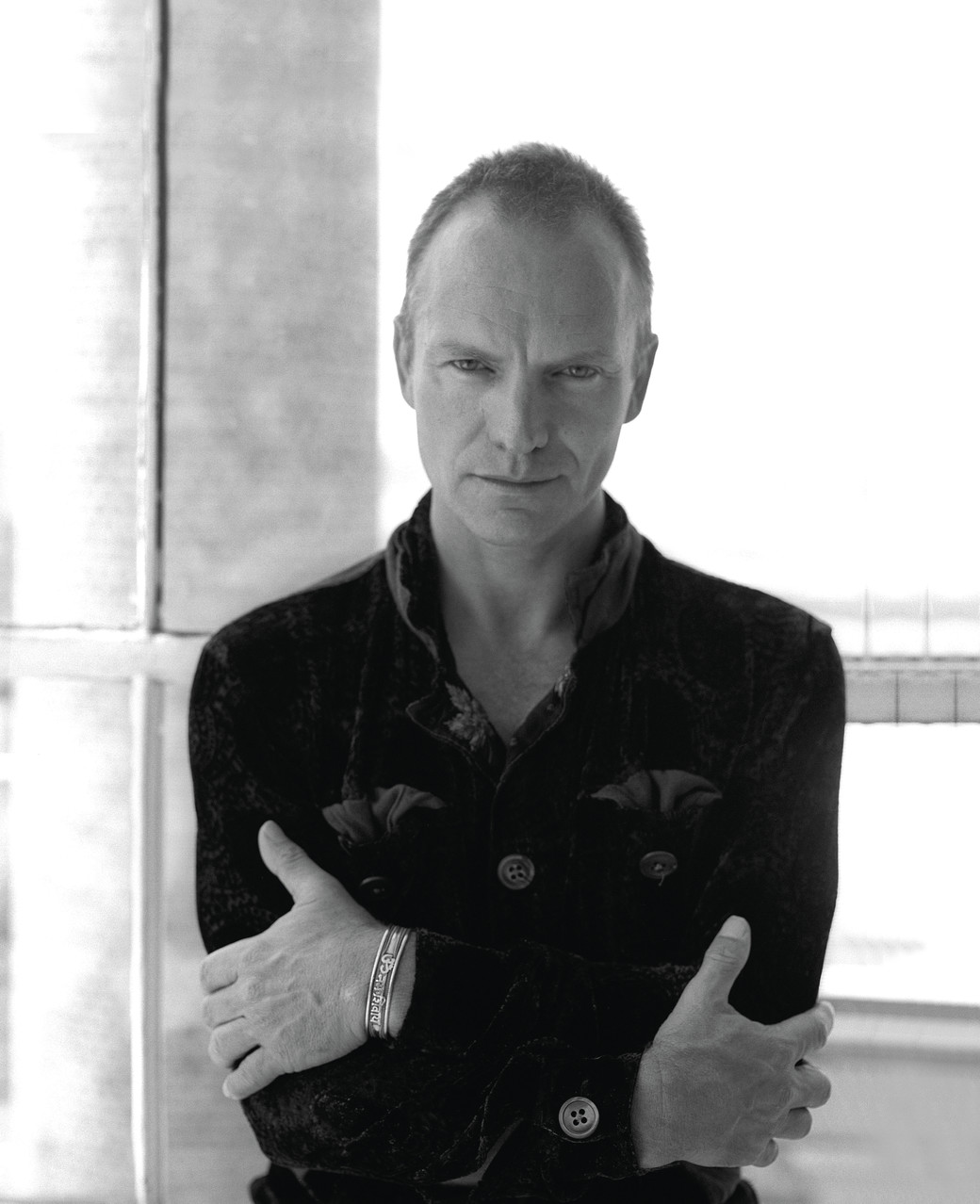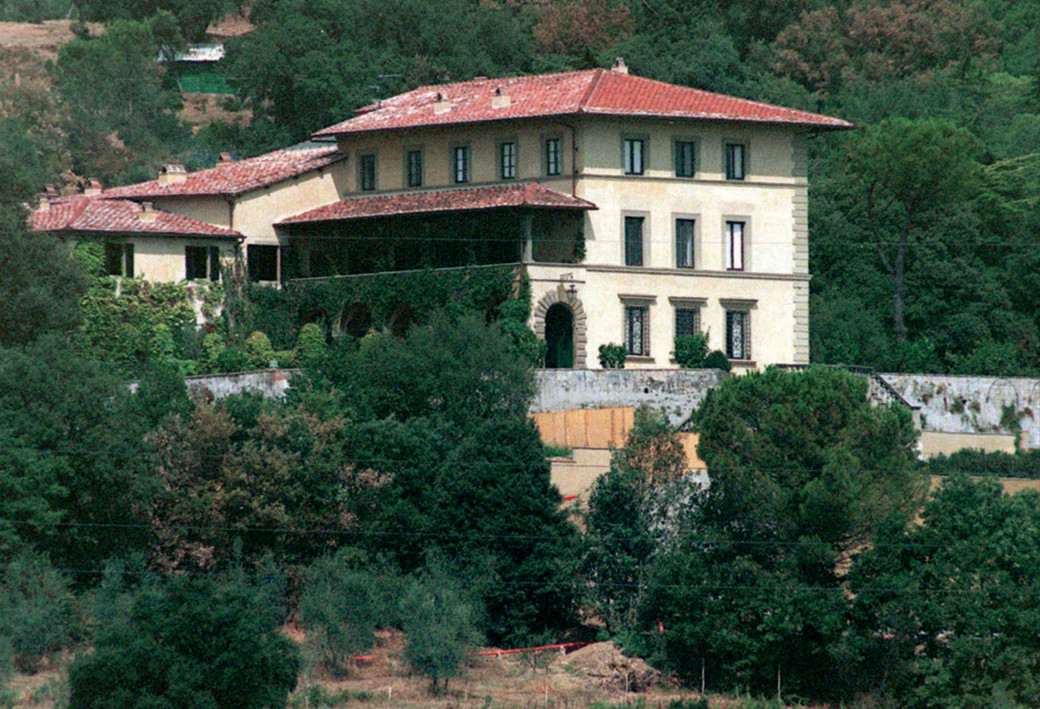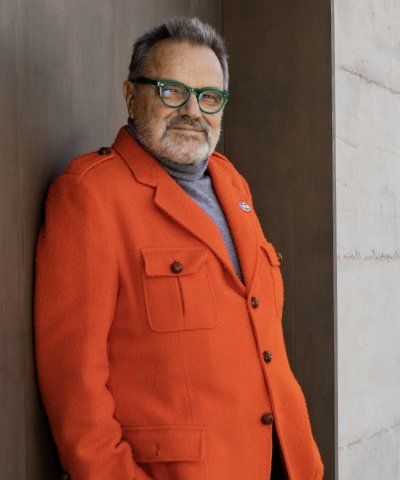Toscana my love
He lives in the quiet of the Palagio and is one of the most famous faces of international music: let's talk about Sting.
Birds tweeting and bells ringing. Countryside sounds mingle with the Renaissance songs by John Dowland, the English musician renamed and celebrated by Sting as “the first English songwriter” in his 2006 album “Songs from the Labyrinth”. The above-mentioned birds and bells are, by now, as famous as the Renaissance lute-player banished from the English court because he became Catholic and whose works Sting sang at the Verdi Theatre in Florence, although, he said at that time, he would have preferred Palazzo Pitti.
They are famous, but they go on tweeting, the birds, in the woods of the Valdarno area, and ringing, the bells in the churches of Figline and Ponte agli Stolli, the small village south of Florence where Sting recorded his album and where he lives most of the year. In the villa named Il Palagio that he considers, in spite of his properties in the US and England, his true home, where he loves living with his wife Trudie Style, their six children, a dog, a horse and a mountain bike. Surrounded by hectares and hectares of olive trees, cypresses and oak woods.
 Sting
Sting“Most of the year I am a proud Tuscan resident, very aware of this region’s cultural importance in the world, from the Etruscans to the Renaissance age up to the present day”, he said some time ago while presenting the book written by Claudio Martini, President of Regione Toscana and a friend of his, “Un nuovo mondo globale da New York a San Rossore”. Sting explained that the peace of Tuscan countryside nourishes his contemplative spirit and he gets inspired while walking in the woods or swimming in the small lakes he finds along the way.
“In the quiet of Tuscan woods I found poetry; I am not, however, the first Englishman to have fallen in love with this countryside” , says the still very handsome English rock star who, in his villa above Figline facing the sweet green Valdarno hills, looks more and more like a Renaissance figure.
And since Gordon Matthew Sumner, known as Sting, has never ceased to surprise himself and the others, after singing the works of Dowland and saying for years that he would have never re-formed one of the most beloved bands in the world which disbanded twenty-three years ago, he now reunites with Stewart Copeland and Andy Summers and relaunches the unforgettable Police. The tour started in May and comes to Italy in October. But where did the three Police start playing “Roxanne” or “Message in a bottle”, perhaps fighting over sounds and arrangements? At the Palagio, the villa two or three kilometres from Figline. From the outside you can see an ivory white house aged by time, restructured and furnished by the architect-friend Alan Mertens, immersed in the huge park. The fence and the body guards, who are always there when Sting is at home, block anybody’s way, even the household staff’s.
 Villa Il Palagio
Villa Il PalagioBut if you are able to go beyond the gates, you will see a typical Tuscan villa, that Sting bought from the duke Simone Velluti Zati, surrounded by an Italian-style garden planted with boxes, roses and lemon trees, sloping down to the wild and natural park tended by landscape designer Arabella Lennox Boyt and supplied with plants from nursery Piante Mati in Pistoia. However, the secret of Sting’s music and ability in remaining at the top while living in his secluded and very private Tuscan haven, hangs in mid-air: on the balcony that, from the villa’s last floor leads to the farm a few meters away and, from there, to the super modern and super technological recording studio built in the barn.
Everything happened and happens there, in that barn transformed into the temple of music. Lately the Police got together again there and from those Tuscan hills the band’s new tour took off. There Sting lives, in his armchair with a built-in music stand. The locals were intrigued by him at first, then they got used to his kind reservedness and shyness, upset only when the expansive Dustin Hoffman arrived in town as his guest. Now the villagers consider him one “of the family” , they see him riding his mountain bike with his friends or body guards always keeping at a safe distance. They meet him in the woods or near small lakes which Sting, a natural lifestyle enthusiast, prefers to his beautiful pool surrounded by meadows and olive trees. Some years ago they even got used to the hundreds of posters hanging all over and showing the singer’s photo while he donates blood and the writing: “If Sting donates blood, you can too”. Sting wanted to help the local blood donors association “Fratres”. “We are proud-says the mayor of Figline Riccardo Nocentini- that Sting mentions our woods and hills in every interview. I hope to persuade him to take part in a big local event”. The famous DVD “All this time” was recorded at the Palagio on the evening of September 11 2001.
 Sting MT443827
Sting MT443827The date had been chosen in advance, it should have been a party for a few friends in the villa’s garden. It turned out to be a very sad party: the American musicians were unable to contact their families, Sting had lost a friend in the Twin Towers attack but refused to get into a panic. “I am angry, confused, scared” he said, but he went on with his work, with tears in his eyes, dedicating his most intense and touching version of “Fragile” to the Twin Towers’ victims. After the Police tour, Sting will probably go back, flying his private jet, to his beloved Tuscan countryside where he also devotes much time and energy to organic agriculture. In Tuscany he produces olive oil, wine and jam.
 Sting MT343826
Sting MT343826A few years ago, he spent six million euros to buy a huge plot of land at a short distance from his Tuscan-Provençal-British-ethnic style villa: hectares with about ten farmhouses that Sting is restructuring with architect Mertens’s help. They say that he will not rent them, he will use them as guesthouses for his friends. Madonna has already been spotted while asking for directions to reach the Palagio, as well as Springsteen, George Clooney, Elton John, Tom Hanks. Just to mention a few names.


















